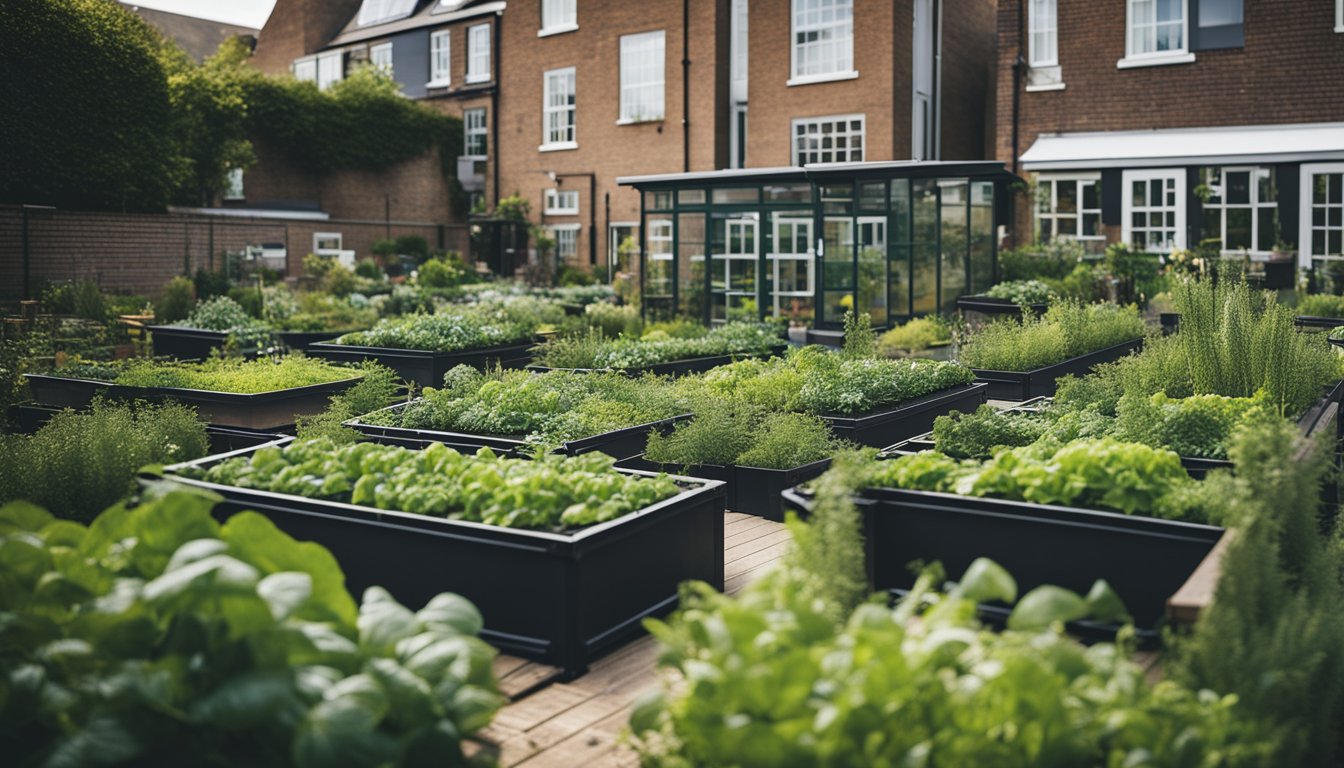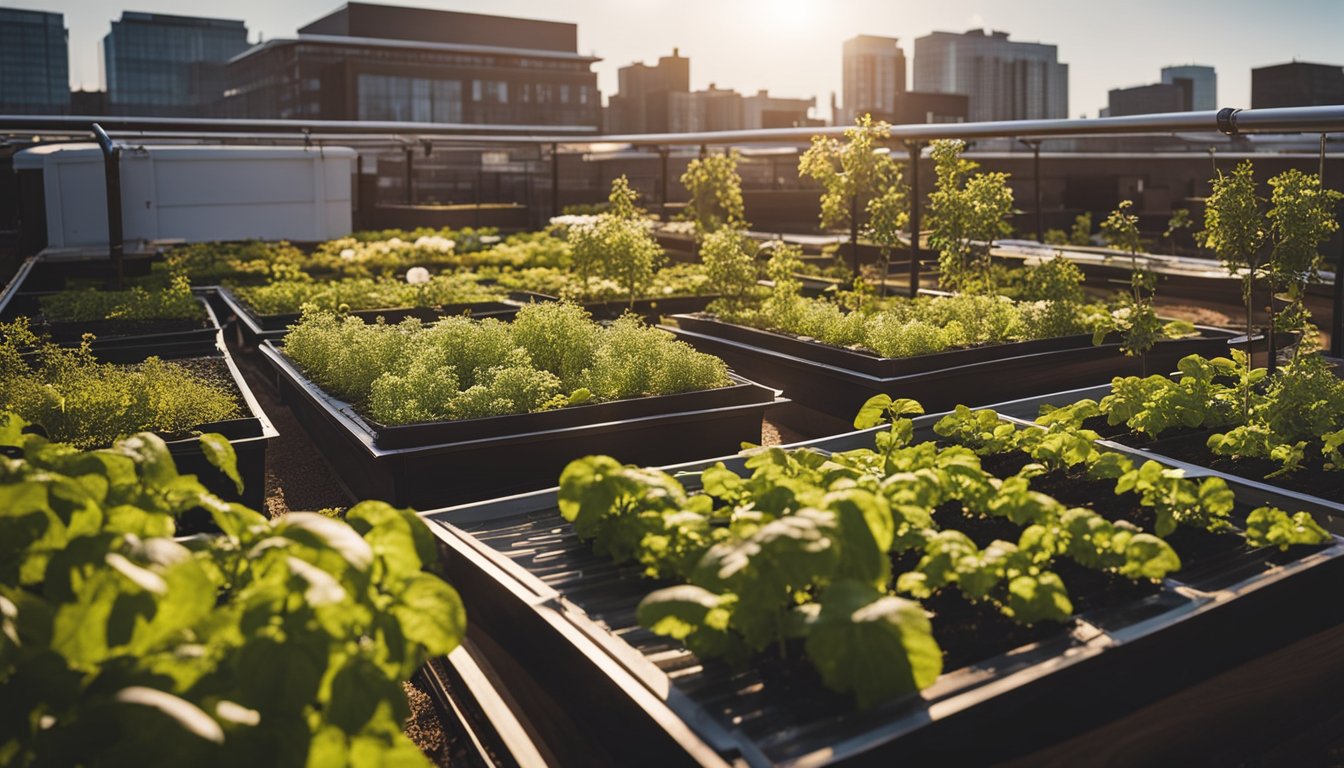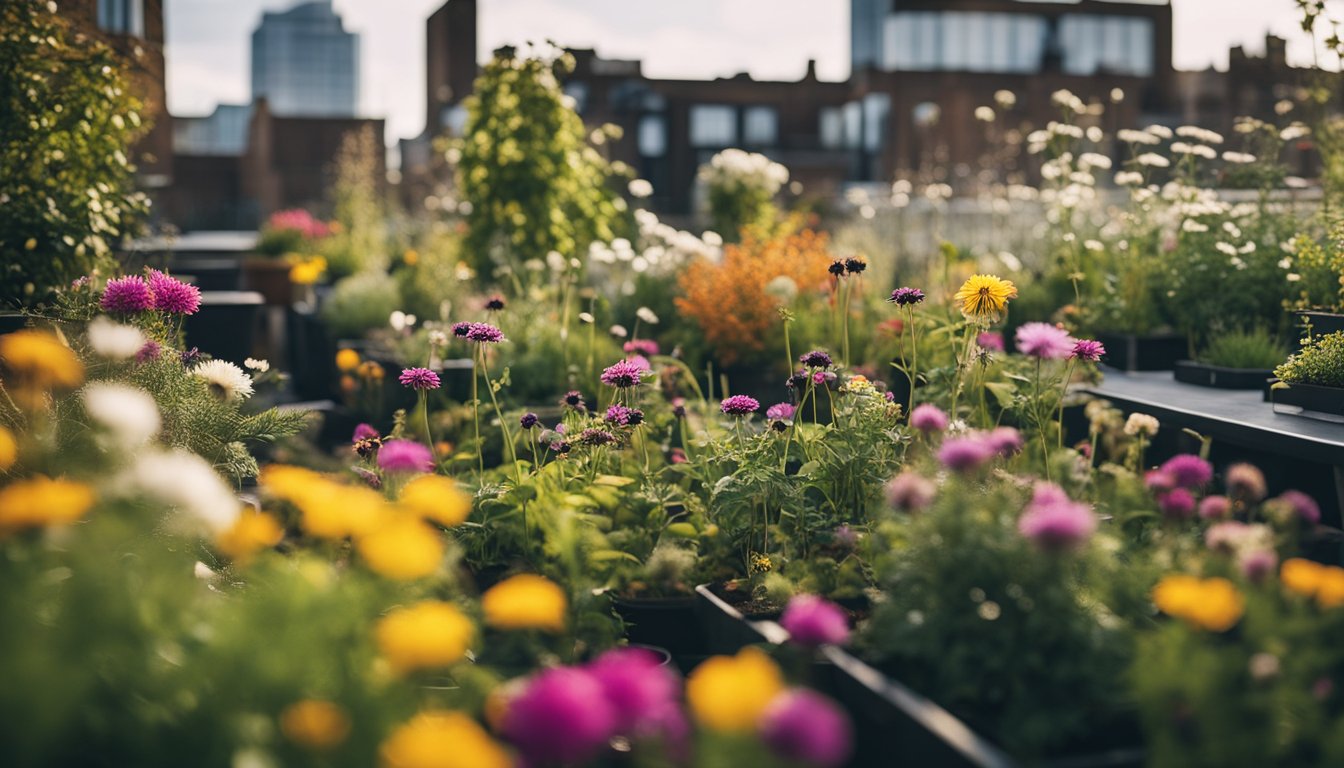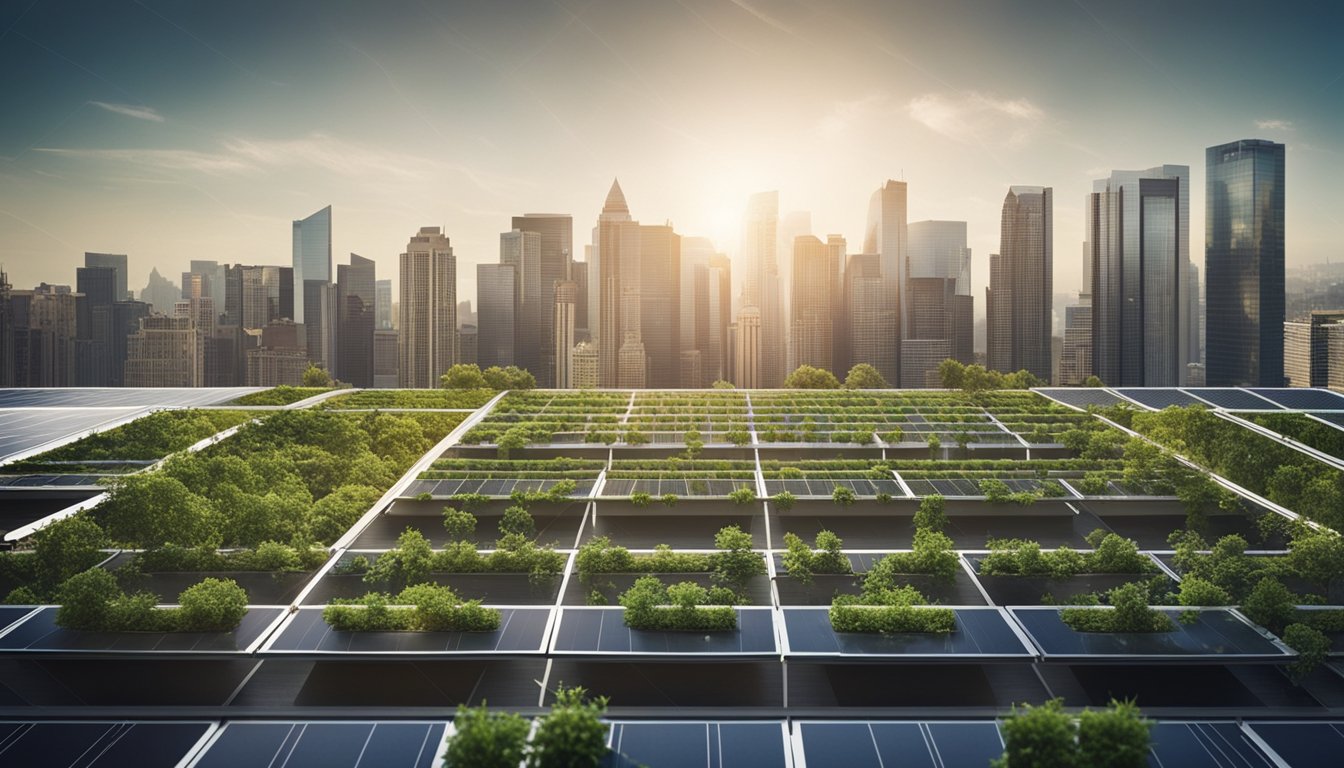Late updated: 20 Apr 2025 11:04
Written by: Oliver Bennett
Creating A Sustainable Urban Garden On UK Roofs: Innovative Approaches for City Living
Urban rooftops in the UK offer a unique opportunity to contribute to sustainability and combat urban environmental challenges. Transforming these spaces into lush, green areas not only enhances the aesthetic appeal but also provides practical benefits. By adopting sustainable practices such as rainwater harvesting and composting, we can create thriving urban gardens that promote biodiversity and resilience against climate change.

These green oases can significantly improve urban air quality and reduce the heat island effect commonly found in cities. They provide essential habitats for various species, contributing to increased biodiversity in urban settings. Additionally, these gardens offer a tranquil retreat from the hustle and bustle of city life, providing therapeutic benefits to those who tend to them.
The process of establishing a sustainable rooftop garden involves careful planning and consideration of environmental factors. Essential components include selecting appropriate plant species that can thrive in rooftop conditions and designing systems to maximise water efficiency. Furthermore, integrating solar panels and other sustainable technologies enhances the garden’s contribution to environmental goals.
Key Takeaways
- Sustainability practices enhance rooftop gardens' benefits.
- Biodiversity can thrive with careful plant and design choices.
- Effective design involves innovative resource management.
Essential Foundations for Creating a Sustainable Urban Garden on UK Roofs

Creating a sustainable urban garden on a UK roof requires careful consideration of several foundational elements. Structural integrity, understanding the types of roof gardens, and recognising climatic influences are vital to success.
Structural Considerations and Roof Suitability
Before establishing a living roof, we must assess the roof’s structural capacity. Most importantly, it should support the additional weight of soil, plants, and water retention systems. In many cases, installing a green roof may require reinforcing structural elements. Consultation with a structural engineer can ensure safety and durability.
Drainage is critical to prevent water accumulation, which can lead to leaks or structural damage. Implementing a robust drainage and waterproofing system helps maintain roof integrity. Ensuring proper drainage not only preserves the structure but also promotes plant health by preventing root rot.
Types of Sustainable Roof Gardens: Extensive, Intensive, and Brown Roofs
Different types of green roofs offer varied benefits. Extensive green roofs feature shallow soil layers, supporting low-maintenance vegetation like sedums and grasses. They are lightweight, making them suitable for existing buildings with limited load-bearing capacity.
Intensive green roofs, akin to traditional gardens, allow for deeper soil and diverse plantings. They include trees and shrubs but demand more maintenance and stronger structural support.
Brown roofs promote biodiversity by using recycled materials and local soil. These roofs often remain undisturbed, creating habitats for a variety of wildlife, such as birds and insects. Selecting the appropriate roof type stems from balancing structural limits with desired aesthetic and ecological outcomes.
Climate and Environmental Factors in the UK Context
The UK's temperate climate influences plant selection and maintenance strategies. The relatively consistent rainfall aids irrigation needs but necessitates effective drainage systems. Understanding seasonal variations is crucial in choosing hardy, drought-resistant species that flourish year-round.
Urban geography influences microclimates, with higher temperatures in cities due to the urban heat island effect. Green roofs can mitigate these effects by reducing ambient temperature and energy use, offering ecological benefits through heat absorption and increased greenery.
In summary, establishing a sustainable roof garden in the UK involves a comprehensive evaluation of structural, environmental, and ecological factors that inform design and plant choices.
Design Strategies and Biodiversity Enhancement

Creating a sustainable urban garden on UK rooftops benefits biodiversity and enhances living spaces. Thoughtful design strategies for plant selection, habitat creation, water management, and multipurpose integration are key elements in achieving vibrant urban ecosystems.
Selecting Plants and Wildflower Seed Mixes for Urban Rooftops
When selecting plants for rooftop gardens, native wildflower seed mixes play a vital role. Native plants are adapted to local conditions and support greater biodiversity. They attract invertebrates and pollinators, including solitary bees, which are essential for ecosystem health. Wildflower seed mixes can include species like orchids, grasses, and hardy herbs, which collectively provide continuous blooming cycles and habitat diversity.
Plant choices are influenced by rooftop load-bearing capabilities and microclimate conditions. Sedum species are popular for green roofs due to their drought resistance and minimal substrate requirements. Incorporating a mix of sedum roofs and diverse plant life not only creates a vivid display but also helps mitigate urban heat and improve air quality.
Creating Wildlife Habitat and Supporting Urban Biodiversity
Establishing wildlife habitats on rooftops is crucial for urban nature conservation. Features such as small water bodies, nesting boxes, and insect hotels create microhabitats for a variety of species. Our goal is to increase invertebrate species diversity, providing vital food sources for birds like the black redstarts.
In designing these habitats, we must consider the specific needs of different species. This involves careful planning through ecological surveys to determine the most suitable structures and planting layouts. Creating layered vegetation with varying heights can also simulate natural habitats, promoting an enriched biodiversity within the urban environment.
Incorporating Sustainable Drainage Systems and Water Management
Sustainable drainage systems (SuDS) are integral to managing water efficiently on rooftops. These systems help control water runoff, reducing flood risk and lowering the urban heat impact. Retention features such as gravel beds and permeable layers allow water to be absorbed and filtered naturally, benefiting the broader environment.
Water management can be advanced with rainwater harvesting techniques, supporting irrigation while conserving water resources. Designing our rooftops with effective water management in mind not only supports plant life but also contributes to air quality improvement and climate change resilience.
Integrating Additional Functions: Solar Panels, Tranquillity, and Green Space
Beyond biodiversity, rooftops serve as multifunctional spaces incorporating solar panels and leisure areas. Combining solar panels with vegetation maximises the use of horizontal surfaces, reducing the ecological footprint and enhancing energy efficiency. Green spaces offer tranquillity and a connection with nature amidst urban settings.
These spaces benefit mental well-being while ensuring a sustainable approach to urban planning. We can design these areas to include seating, pathways, and relaxation spots, enabling a balance between technology and serene green spaces. This integration fosters a harmonious blend of ecological and human elements in urban design.
Frequently Asked Questions

In creating a sustainable urban garden on a UK rooftop, it is essential to consider the initial steps for setup, selection of suitable plants, and legal considerations. We also explore methods to ensure sustainability, manage water effectively, and support biodiversity.
What are the initial steps to establish a rooftop garden in an urban UK setting?
First, assess the structural capacity of your roof to handle the additional weight. Consult with professionals when necessary to ensure safety. Additionally, ensure that your garden gets adequate sunlight, as vegetables and many plants thrive in sunny conditions.
How can one ensure the long-term sustainability of a roof garden in variable British climates?
Use organic fertilisers and incorporate composting to maintain soil health. Selecting frost-resistant plants and employing windbreaks can help manage weather challenges. Regular maintenance, including watering and weeding, is crucial for sustainability.
What are the most suitable plant species for rooftop gardens in urban environments within the UK?
Opt for hardy plants like herbs, root vegetables, and certain flowers that can withstand variable weather. Consider mint, thyme, carrots, and lavender. Native plants are generally more adaptable to the local conditions and require less maintenance.
What legal considerations must be taken into account when creating a roof garden in the UK?
Check for any local planning permissions or building regulations that may apply. It's important to ensure your rooftop garden complies with safety standards and community guidelines. Engage with local authorities if necessary to avoid potential legal issues.
How can urban rooftop gardens contribute to local wildlife and biodiversity in the UK?
Planting a variety of species can attract pollinators such as bees and butterflies. Installing bird feeders and providing nesting opportunities also supports local wildlife. Green roofs improve the urban ecosystem, offering habitats for various species.
What are effective methods for managing water and drainage in British urban rooftop gardens?
Incorporate a proper drainage system to prevent waterlogging. Rainwater harvesting can be a sustainable way to manage water needs. Utilise moisture-retentive materials and design the garden to direct excess water safely away from the roof structure.
